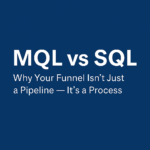The Power of Meta Platforms in Lead Generation
In today’s digital landscape, Meta ads platforms—primarily Facebook and Instagram—have become pivotal in connecting businesses with potential customers. With billions of active users, these platforms offer unparalleled opportunities for lead generation. By leveraging Meta’s advanced targeting capabilities and user-friendly ad formats, businesses can effectively capture and nurture leads, driving growth and revenue.

Steps for Meta Lead Generation Campaigns
1. Understanding Meta Lead Generation Campaigns
Meta Lead Ads are designed to simplify the lead generation process by allowing users to submit their information directly within the platform, eliminating the need to navigate to an external website. This seamless experience reduces friction and increases the likelihood of conversion.
Key Features:
- Instant Forms: Pre-filled forms with user information, making it easier for users to submit their details.
- Customizable Fields: Tailor the form fields to collect the most relevant information for your business.
- CRM Integration: Seamlessly integrate with Customer Relationship Management (CRM) systems to manage leads effectively.
By utilizing these features, businesses can streamline the lead capture process, ensuring that potential customers can express interest with minimal effort.
2. Setting Clear Objectives
Before launching a lead generation campaign, it’s essential to define clear objectives. Whether it’s increasing newsletter sign-ups, gathering contact information for sales outreach, or promoting a new product, having a specific goal will guide your campaign strategy.
Clear objectives also help in measuring the success of your campaign. By establishing key performance indicators (KPIs) aligned with your goals, you can assess the effectiveness of your efforts and make data-driven decisions for future campaigns.
3. Crafting Compelling Ad Creative
The success of your lead generation campaign heavily depends on the ad creative. This includes the visuals, headline, and ad copy.
Best Practices:
- Visuals: Use high-quality images or videos that resonate with your target audience.
- Headline: Craft a clear and concise headline that communicates the value proposition.
- Ad Copy: Highlight the benefits of your offer and include a strong call-to-action (CTA).
Remember, your ad creative should align with your brand identity and appeal to the emotions and needs of your audience. A/B testing different creatives can help determine what resonates best with your target demographic.
4. Targeting the Right Audience
Meta’s advanced targeting options allow you to reach the most relevant audience for your campaign.
Strategies:
- Custom Audiences: Target users who have previously interacted with your business.
- Lookalike Audiences: Reach new users who share similar characteristics with your existing customers.
- Detailed Targeting: Use demographics, interests, and behaviors to narrow down your audience.
Effective audience targeting ensures that your ads are seen by individuals most likely to be interested in your offerings, thereby increasing the efficiency and ROI of your campaigns.
5. Optimizing Lead Forms
The design and structure of your lead form can significantly impact conversion rates.
Tips:
- Keep It Short: Limit the number of fields to reduce friction.
- Use Conditional Logic: Show or hide fields based on user responses to make the form more dynamic.
- Provide Incentives: Offer discounts, free trials, or valuable content in exchange for user information.
An optimized lead form not only enhances user experience but also increases the likelihood of capturing high-quality leads.
6. Implementing Dual-Path Optimization
Meta has introduced dual-path optimization, allowing advertisers to generate leads through both website forms and instant forms simultaneously. This feature enables Meta’s algorithms to direct users to the most likely conversion path, enhancing lead generation efficiency.
By leveraging dual-path optimization, businesses can cater to different user preferences, whether they prefer to stay within the platform or visit an external site, thereby maximizing lead capture opportunities.
7. Leveraging Conversion Leads Optimization
Conversion Leads Optimization is a performance goal that prioritizes lead quality over quantity. By integrating your CRM with Meta’s Conversions API, you can provide feedback on lead quality, allowing Meta to optimize ad delivery towards users more likely to convert into customers.
This approach ensures that your advertising budget is spent on acquiring leads with a higher propensity to become paying customers, improving overall campaign ROI.
8. Budgeting and Bidding Strategies
Effective budgeting and bidding are crucial for maximizing ROI.
Recommendations:
- Start with a Test Budget: Allocate a small budget to test different creatives and audiences.
- Use Campaign Budget Optimization (CBO): Allow Meta to distribute your budget across ad sets to achieve the best results.
- Set Bid Caps: Control costs by setting maximum bid amounts.
Regularly monitor your spending and adjust your budget allocation based on campaign performance to ensure optimal use of resources.
9. Monitoring and Analyzing Performance
Regularly monitor your campaign’s performance to identify areas for improvement.
Key Metrics:
- Cost per Lead (CPL): Measure the average cost of acquiring a lead.
- Lead Quality: Assess the likelihood of leads converting into customers.
- Form Abandonment Rate: Identify if users are dropping off before completing the form.
Utilize Meta’s Ads Manager and analytics tools to track these metrics and make data-driven decisions to enhance campaign effectiveness.
10. A/B Testing for Continuous Improvement
Conduct A/B tests to compare different elements of your campaign and determine what works best.
Elements to Test:
- Ad Creative: Images, videos, headlines, and copy.
- Audience Segments: Different demographics or interest groups.
- Lead Form Variations: Number of fields, field types, and form layout.
Continuous testing and optimization are key to refining your approach and achieving better results over time.
11. Integrating with CRM Systems
Integrate your lead generation campaigns with CRM systems to streamline lead management and follow-up processes. This ensures timely engagement with leads and improves the chances of conversion.
Automation tools can facilitate this integration, allowing for real-time data synchronization and efficient lead nurturing workflows.
12. Ensuring Compliance and Privacy
Adhere to data protection regulations like GDPR and CCPA by including privacy policies and obtaining explicit consent from users when collecting their information.
Transparency in data handling builds trust with your audience and safeguards your business against potential legal issues.
13. Utilizing Retargeting Strategies
Retarget users who have interacted with your ads or visited your website but didn’t convert. This keeps your brand top-of-mind and encourages users to complete the desired action.
Implementing retargeting campaigns can significantly improve conversion rates by re-engaging interested prospects.
14. Exploring Advanced Features
Meta continually updates its advertising platform with new features. Stay informed about these updates to leverage advanced capabilities like automated lead qualification, AI-driven targeting, and more.
Embracing these innovations can give your campaigns a competitive edge and enhance overall performance.
Meta Lead Generation Campaigns : Conclusion
Optimizing lead generation campaigns on Meta requires a multifaceted approach that combines strategic planning, creative execution, and continuous analysis. By implementing the best practices outlined above, businesses can enhance their lead quality, reduce acquisition costs, and ultimately drive growth.
Remember, the digital marketing landscape is ever-evolving. Staying adaptable and informed about the latest trends and tools will ensure your lead generation efforts remain effective and yield the best possible results.
Meta Lead Generation Campaigns : Frequently Asked Questions (FAQ)
Q1: What are Meta Lead Ads?
A: Meta Lead Ads are ad formats available on Facebook and Instagram that allow users to fill out a form directly within the app. These forms are optimized for mobile and often pre-fill information like name and email, making it easier for users to submit their data.
Q2: What is the difference between Instant Forms and Website Leads on Meta Lead Generation Campaigns?
A: Instant Forms open within the Facebook or Instagram app, allowing a faster and seamless lead capture process. Website Leads, on the other hand, direct users to an external landing page. With dual-path optimization, Meta can test and prioritize the more effective route for each user.
Q3: How do I know if my Meta lead generation campaigns are working?
A: Track key performance indicators such as Cost per Lead (CPL), number of leads, form completion rate, lead quality (via CRM feedback), and engagement metrics. Use Meta Ads Manager and CRM integration to analyze and improve campaign performance.
Q4: What is Conversion Leads Optimization and how does it help?
A: Conversion Leads Optimization is a feature that helps Meta prioritize delivering ads to users more likely to become high-quality leads. It works best when your CRM is integrated with Meta via the Conversions API, enabling real-time feedback to improve targeting.
Q5: How can I reduce the cost per lead (CPL)?
A: To reduce CPL, focus on targeting the right audience, using high-quality ad creatives, simplifying your lead form, running A/B tests, and optimizing based on analytics. Also, ensure you’re not overloading your form with unnecessary fields.
Q6: Can I automate follow-up with leads from Meta?
A: Yes. By integrating your Meta Lead Ads with a CRM system or using automation tools like Zapier, you can automate lead assignments, follow-up emails, and sales workflows to respond instantly to new leads.
Q7: Is it necessary to offer an incentive in my lead form?
A: While not mandatory, offering an incentive like a discount, free trial, or downloadable resource can significantly increase form submissions and improve lead quality, especially when targeting cold audiences.
Q8: What are Lookalike Audiences, and why should I use them?
A: Lookalike Audiences are people who share similar traits with your existing customers. They are a powerful targeting tool in Meta that helps you reach new users who are more likely to convert, based on behavioral and demographic similarities.
Q9: How often should I update or optimize my Meta lead generation campaigns?
A: Ideally, monitor your campaigns weekly and make data-driven updates every 1–2 weeks. Frequent A/B testing, adjusting targeting, and refreshing creatives can help avoid ad fatigue and improve results over time.
Q10: What are the common mistakes to avoid in Meta lead generation campaigns?
A: Common pitfalls include targeting too broad an audience, having too many form fields, using weak or unclear CTAs, not integrating with a CRM, and neglecting retargeting strategies. Also, not testing or analyzing results regularly can lead to wasted ad spend.
Read about how to manage quality of leads from Meta campaigns
For more Digital Marketing updates and information follow Popnewsblend.

Hi, I’m Prashant Jain — a curious soul, storyteller, and content creator at heart.I’ve always been drawn to the world of entertainment, travel, sports, health & lifestyle — not just as a writer, but as someone who genuinely lives these experiences. Whether I’m binge-watching the latest OTT series, exploring offbeat spiritual destinations in India, or diving deep into wellness routines and cricket match insights, I love sharing what I discover with like-minded readers.
PopNewsBlend is my way of blending personal journeys with meaningful stories — ones that inform, inspire, and keep you ahead of the curve. Everything I write comes from real observations, hands-on experiences, and a deep passion for understanding the world around us.
Discover more from Popnewsblend
Subscribe to get the latest posts sent to your email.







